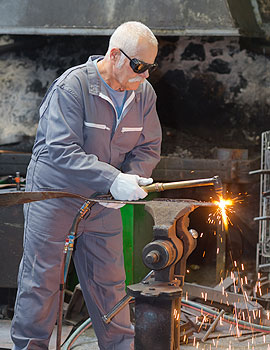
Aluminium Fabrication Equipment And Tools
Aluminium fabrication involves various processes to shape and assemble aluminium into finished products or components. The efficiency and quality of these processes largely depend on the equipment and tools used. Understanding the key equipment and tools essential for aluminium fabrication can help ensure precision, productivity, and cost-effectiveness. Here’s an overview of the primary equipment and tools used by aluminium fabricators in UAE:
Cutting tools:
Cutting tools are fundamental in aluminium fabrication, used to trim or section aluminium sheets, plates, and profiles. Common cutting tools include:
- Sawing machines: Circular saws and band saws equipped with high-speed steel or carbide-tipped blades are used for cutting aluminium profiles and sheets. These machines offer precision and efficiency for straight and curved cuts.
- Laser cutters: Laser cutting technology provides high accuracy and clean edges for complex shapes and intricate designs. Laser cutters are ideal for detailed work and thin aluminium sheets.
- Water jet cutters: Using a high-pressure stream of water mixed with abrasive particles, water jet cutters can cut through aluminium with minimal heat distortion, making them suitable for thicker materials and intricate designs.
Machining equipment:
Machining equipment is used for shaping aluminium through various processes such as drilling, milling, and turning:
- CNC milling machines: Computer Numerical Control (CNC) milling machines are used to perform precise cutting, drilling, and shaping of aluminium parts. CNC technology ensures repeatability and accuracy, making it ideal for complex geometries and high-volume production.
- Lathes: Lathes are used for turning aluminium into cylindrical shapes. They can perform tasks such as turning, facing, and threading, which are essential for producing components like shafts and rods.
Welding equipment:
Welding is a vital process in aluminium fabrication, used to join aluminium parts together. Key welding equipment includes:
- TIG welders: Tungsten Inert Gas (TIG) welders are commonly used for welding aluminium due to their ability to produce high-quality, clean welds. TIG welding provides precise control over the welding process and is suitable for thin and thick aluminium sections.
- MIG welders: Metal Inert Gas (MIG) welders are also used for aluminium welding. They are generally faster than TIG welders and are suitable for a wide range of aluminium thicknesses.
Aluminium fabrication relies on a variety of equipment and tools, including cutting tools, machining equipment, welding equipment, bending and forming tools, finishing tools, and measurement and inspection tools. Each piece of equipment plays a vital role in ensuring precision, quality, and efficiency in the fabrication process.